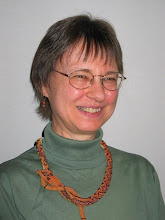Friday, November 28, 2014
WHY DO WE CALL OUR NATIONAL BIRD TURKEY?
Did you ever wonder, as you are eating Thanksgiving dinner, why our national bird is called turkey? It turns out that the North American turkey (Meleagris gallapova) had traveled the world long before the English settlers encountered it in North America.
One linguistic story is that the Portuguese, using their new trading privileges granted by the treaty of Tordesillas in 1494, brought the turkey, among other items, from Spanish territories in the Americas to Goa, the Portuguese colony in India. To this day, the Portuguese word for Turkey is peru, perhaps referring to Peru, the South American country. From India, the turkey was traded to a number of countries, including Egypt. There, turkey entered the Turkic language as hindi (from India). If you are interested in what turkey is called in other languages, take a look at Pulsations. When traders took the turkey to Spain and the British Isles, the bird was named turkey (from Turkey) because Egypt was a province ruled by the Ottomans, a Turkish dynasty. While that's an interesting story, there are questions about whether the Portuguese actually brought back a guinea fowl, a different bird from the American turkey.
There seems to be more documentation for the North American turkey to have come to the attention of the Spanish conquistador Juan de Grijalva in Mexico in 1581. Hernan Cortes found both domesticated turkeys kept by the Aztecs and wild turkeys on his expedition just a year later. The explorers brought the American turkey (Meleagris gallopavo) back to Spain, where it spread to the rest of Europe and the British isles. The name turkey came from a confusion with the guinea fowl, an African bird that was briefly referred to as turkey because it was thought to have been imported into Europe by way of Turkey (as in theory #1).
Domesticated turkeys became an important source of meat in Western Europe by 1580. Turkeys were recognized as very useful birds by sailors and traders because the birds provided more meat than a chicken, could be stored on small cages on ships, and ate just about anything. George Peckham even suggested that English colonists head to North America take male and female birds with them.
Imagine the surprise of the English colonists to encounter wild turkeys (Meleagris gallopavo) when they landed in North America! The bird had come full circle. So that is a quick version of how our national bird has traveled the world and why we call it a turkey.
Subscribe to:
Post Comments (Atom)



No comments:
Post a Comment